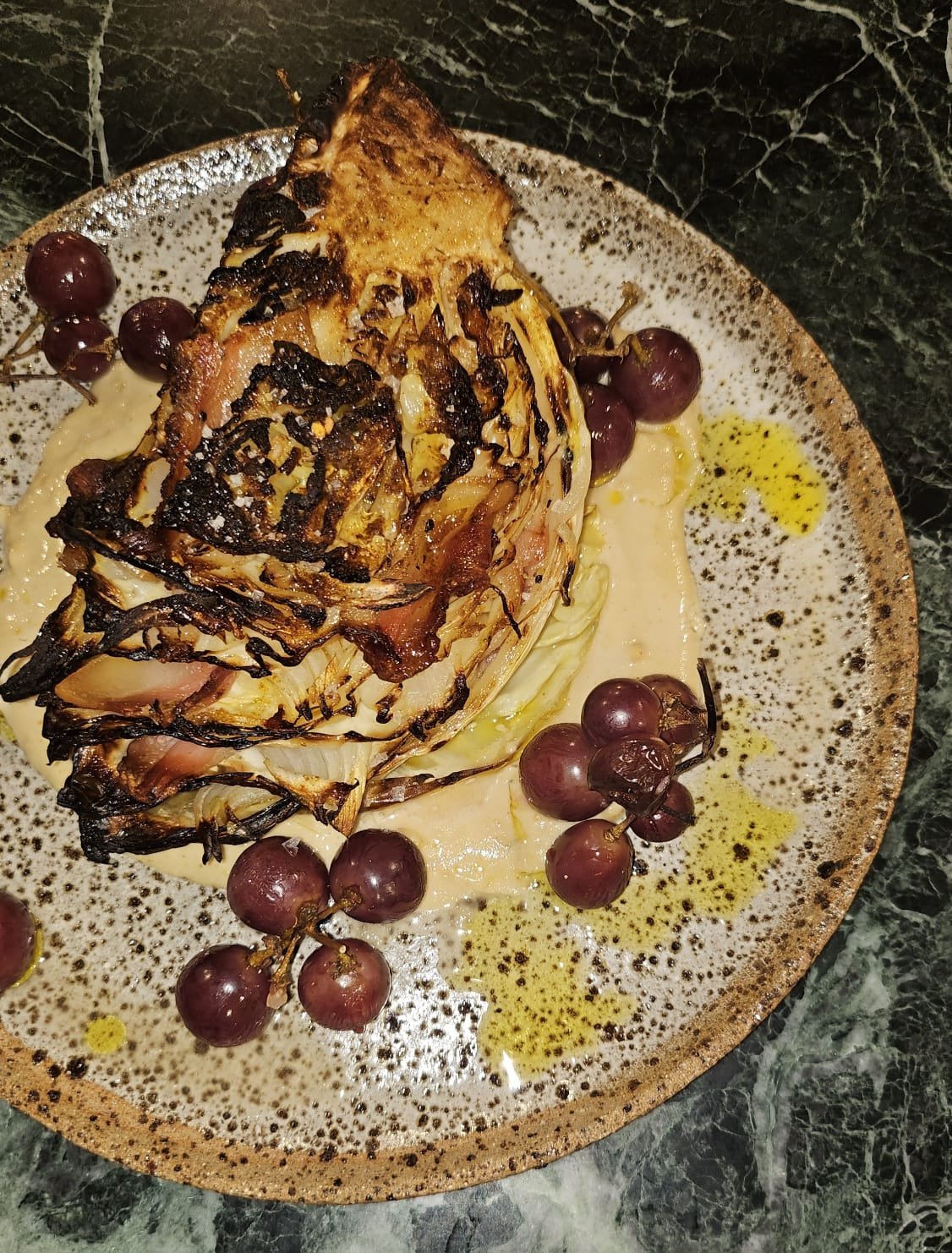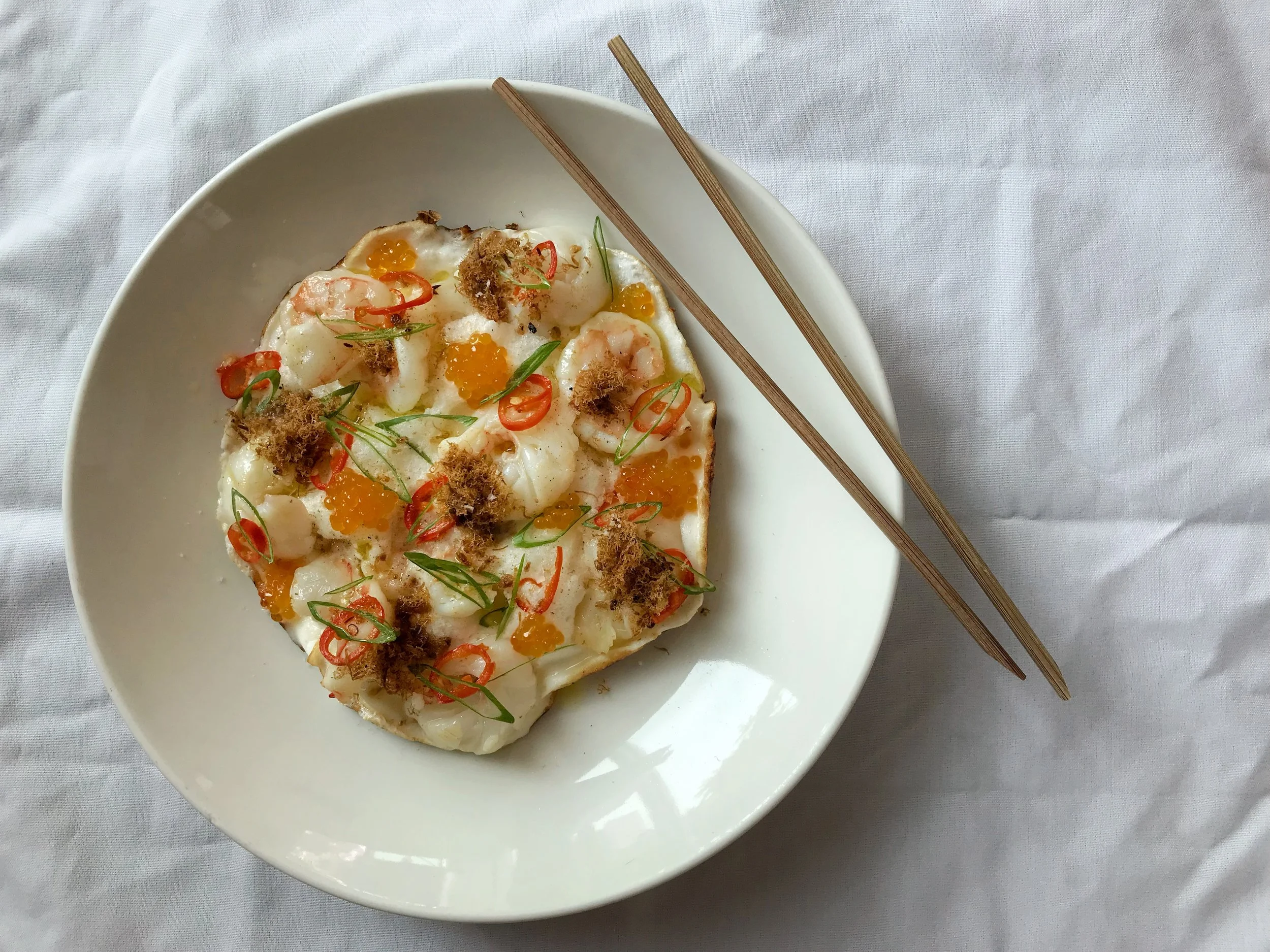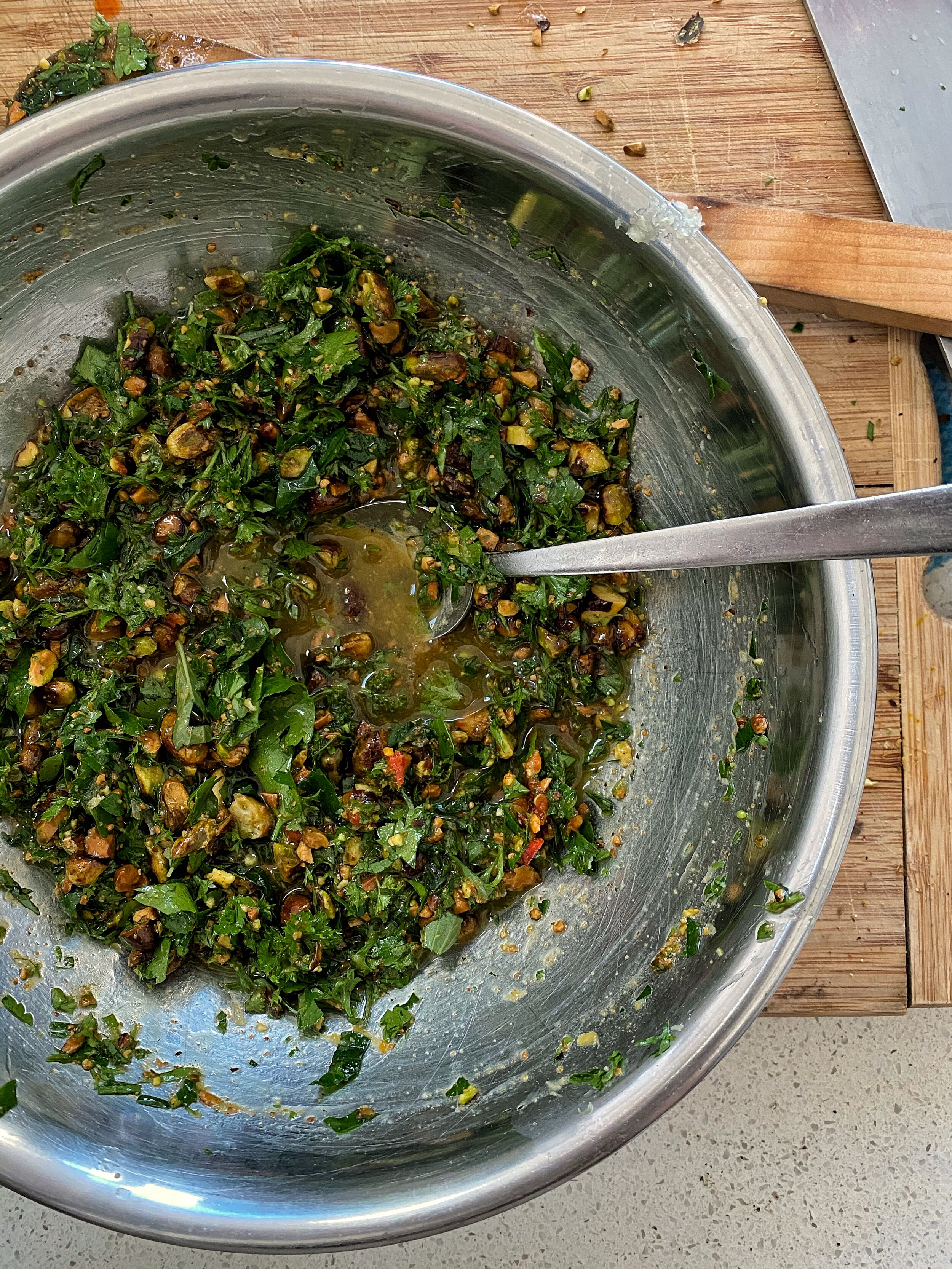When fridge clean outs go right, you get guanciale stuffed cabbage with roasted grapes and cashew cream.
This recipe is a more a “recipe”. That is, a loose list of suggestions that you can adjust based on what you may have in your fridge or cupboard… don’t feel completely wed to what I’ve used, the whole point is to use what you have. If your cabbage is a different variety. If you’re pescatarian and you’d prefer to use tinned achovies instead of guanciale. If you have almonds or pistachios instead of cashews. Just taste, adjust and you’ll figure it out!
The elements that make this dish work are:
Charring the leaves. It adds depth of flavour, texture and a slight smokiness.
Guanciale adds salt, fat and body to the end result.
Chicken stock helps to steam and soften the leave, speeding up the cooking process. Water will totally suffice.
Grapes add acidity, a sweet and sour punch. You could sub that element out with adding pickles to the final dish… I’m thinking pickled red onion.
The cashew cream adds a saucy element to bring it all together. A slick of Greek yoghurt, seasoned with salt, perhaps spiked with preserved lemon would also work beautifully.
Ingredients
A wedge of drumhead cabbage
50g guanciale, sliced
1/4 brown onion, sliced
1 small bunch grapes
1 cup chicken stock
Cashew cream
1/2 cup dry roasted cashews
1/4 cup water
2 tbs olive oil
1 tbs white miso
Lemon juice
salt flakes
Method
Preheat an oven to 210c. Heat a cast iron or heavy based pan on high. Once hot, add oil and char the cut edges of the cabbage. Set aside.
When cool enough to handle, gently tuck slices of guanciale and onion between the leaves of the cabbage. You could add soft herbs, garlic, anchovies, the aim of the aim is to add flavour and fat… how you go about that is up to you!
Transfer to a baking tray, pour over the chicken stock and add the bunch of grapes. Roast until the inner leaves become tender, about 45mins, turning the heat down to 190c at 30mins.
Blitz the ingredients for the cashew cream and season to taste. Add more water if the cream is too thick, more cashews if you’ve overdone it.
To serve, slick the cashew cream on a plate, gently place the wedge on top and dress with a generous drizzle of olive oil, salt and lemon juice.


















